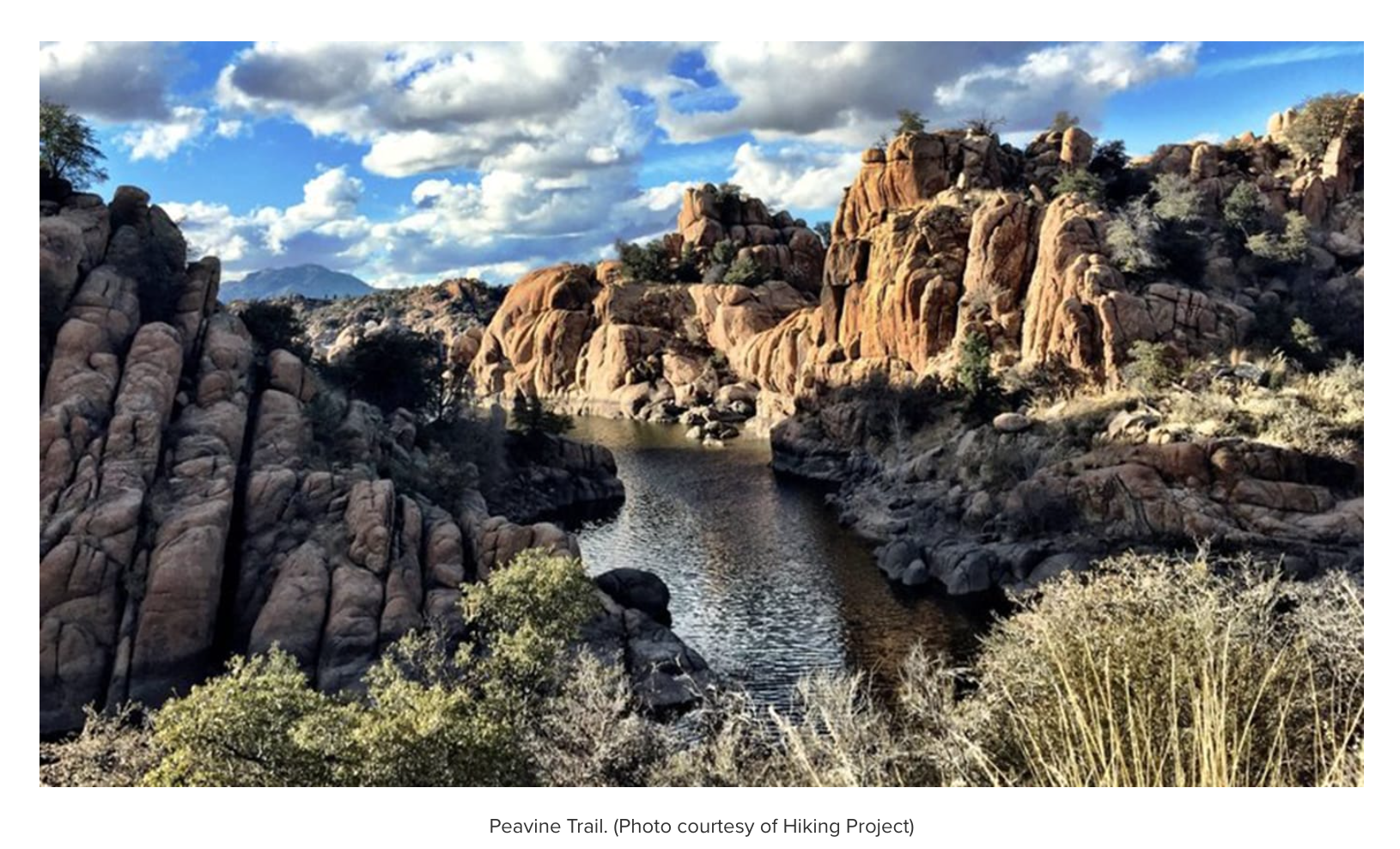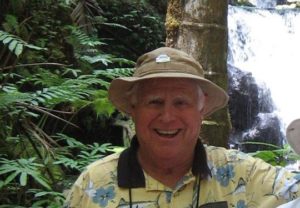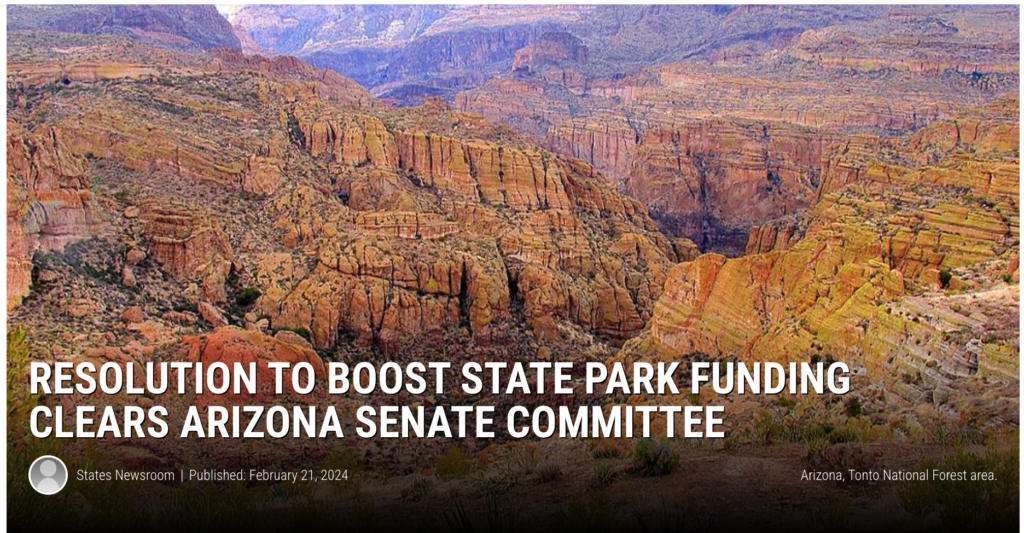Source: AZBigMedia – March 22, 2024
Trust for Public Land, in partnership with Arizona State Parks and Trails (ASPT), Yavapai County, Nature Conservancy, and Town of Chino Valley, announced the protection of 734 acres that is now owned by ASPT. A new state park will not only connect folks to the outdoors but will protect Sullivan Lake at the start of the Verde River, enable the extension of the Peavine National Recreation Trail from Prescott to the river, and preserve history of great importance to Arizona.
Arizona State Parks and Trails plans to develop its newest park on the newly acquired land. Following a comprehensive planning process, ASPT will be able to offer additional outdoor recreation opportunities in north-central Arizona.The property contains the same abandoned rail bed that will enable the extension of the Peavine National Recreation Trail, one of the few “rail to trail projects” in the state, from its start at Watson Lake and Granite Dells in nearby Prescott to the start of the Verde River, a distance of 25 miles. It will result in a trail available for a variety of non-motorized recreational uses including mountain biking, horse riding and hiking.
“Having the opportunity to protect such an important outdoor space like Del Rio Springs doesn’t come around every day and TPL is proud to have worked to support the creation and enhancement of diverse outdoor recreation, while sustaining the integrity of natural aquifers, maintaining community heritage and rural character, and promoting compatible economic opportunities in the Greater Chino Valley area,” saidMichael Patrick, Senior Project Manager for Trust for Public Land.
Through a community-based master planning process coordinated by a landscape architect hired by Trust for Public Land, over 30 organizations from public agencies to colleges to nonprofit organizations, and the public at large described the importance of conserving this special place.
Protection of this property will result in nearly all of the first 25 miles of the Verde River being in public ownership (from the property’s Sullivan Lake to Arizona Game and Fish Department’s Upper Verde Wildlife Management Area and land owned by Arizona State Land Department to the Prescott National Forest). This upper stretch of the Verde River is actively being proposed for Wild and Scenic River status, a Congressional designation that would maintain the river’s ecosystems and protect clean water supplies for future generations.
The land also includes a significant part of its namesake, Del Rio Springs. These springs were historically so prolific that they provided the only source of water for many northern Arizona communities including Ash Fork, Seligman, Williams, and the southern rim of the Grand Canyon. Railroad maps show the location of the “Puro” railroad stop on the property in which rail cars were loaded with water from the springs to serve those distant communities. In the early 1900’s, the City of Prescott installed one of the first steam-powered water pumps in the Southwest to provide drinking water by a 20-mile wooden pipeline from these springs to Prescott. Del Rio Springs now lies on the new property owned by Arizona State Parks in addition to several parcels owned by Town of Prescott Valley and City of Prescott, who are collaborating on the project.
“We are excited to bring a state park to the Prescott and Chino Valley area,” said Bob Broscheid, executive director of Arizona State Parks and Trails. “We will begin our long-term planning for this project with extensive public input and stakeholder collaboration, ensuring that this new park meets the needs of our residents, visitors, and partners.”
A substantial portion of the funds to acquire the land, $6 million, was provided by the Arizona Legislature through a capital appropriation in the current year’s state budget to ‘create a new state park at the headwaters of the Verde River’. This funding initiative was led by Arizona Senator Sine Kerr and Representative Selina Bliss, and also supported by local state legislators Senator Ken Bennett and Representative Quang Nguyen.
In addition to providing outdoor recreation and protecting the Verde River and springs, the property offers opportunities to protect and interpret early history of statewide importance. Following the establishment of the Arizona territory in 1863, the first capital of the territory was located on the property for a short while, as part of the original Fort Whipple, before being moved to Prescott.
Following purchase of the land by a subsidiary of the Atchinson, Topeka and Santa Fe Railroad in 1913, the Fred Harvey Company partnered with the railroad to establish a farm to raise poultry & beef and produce ice, eggs and other foods here to supply their premier chain of hotels along the rail line connecting Chicago to Los Angeles. Trust for Public Land plans to acquire additional adjacent land with more historic buildings for preservation and interpretation later this year.
Yavapai County contributed $1.5 million towards the purchase of the land with funds available to it through the federal American Rescue Plan Act of 2021. County Supervisor Craig Brown has been a champion of this project for the economic benefits and jobs that a new state park can bring to the surrounding rural communities of Chino Valley and Paulden.
“This seals the deal with the Town of Chino Valley and the State Park system to bring recreational opportunities and economic development to the area,” said Craig Brown, Chairman of the County Board of Supervisors. “Yavapai County has been happy to participate with technical assistance and project funding for this important historic preservation project.” The Town of Chino Valley also has been a strong supporter of the project, particularly due to increased tourism that it anticipates from tourism, benefits in attracting new businesses to the area and providing more outdoor recreation for its residents.
Given the importance of protecting the Verde River, The Nature Conservancy provided a major grant that was critical to the success of this project. Nina Mason Pulliam Charitable Trust, a substantial philanthropic funder for protection and restoration work on the Verde, also provided a grant to Trust for Public Land that was instrumental in project costs.
“This project is a win for conservation, recreation and historical preservation at one of our state’s incomparable places near the Verde River’s headwaters. It is especially remarkable to see the collaboration between the partners involved. The Nature Conservancy is proud to support Trust for Public Land and all of the partners and be a part of the designation of this new state park,”said Dan Stellar, Arizona state director, The Nature Conservancy.
The sellers of the property, Bob O’Rear and Jim Brown of Del Rio Springs Loan Partners LLC, also made a major contribution to the project by selling the land at a significant discount from its appraised value. They were represented by Land Advisors Organization, one is the nation’s largest land brokerage firms. The firm’s Conservation Division provides expertise in developing multi-generational land strategies and assisting clients in leaving a conservation legacy.
“The new State Park will be an incredible asset to my hometown of Chino Valley,” said Heather Reading, Conservation Advisor for Land Advisors Organization. “We are thrilled to have helped Del Rio Springs Loan Partners and the project partners leave this incredible legacy that celebrates the history of Del Rio Springs Ranch and provides a better opportunity to connect people to the headwaters of the Verde River.”





You must be logged in to post a comment.